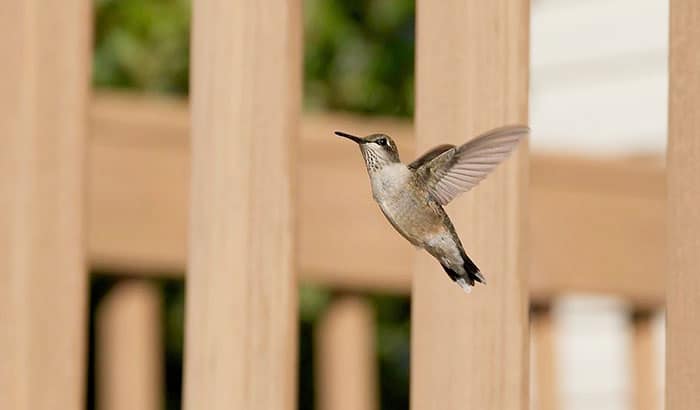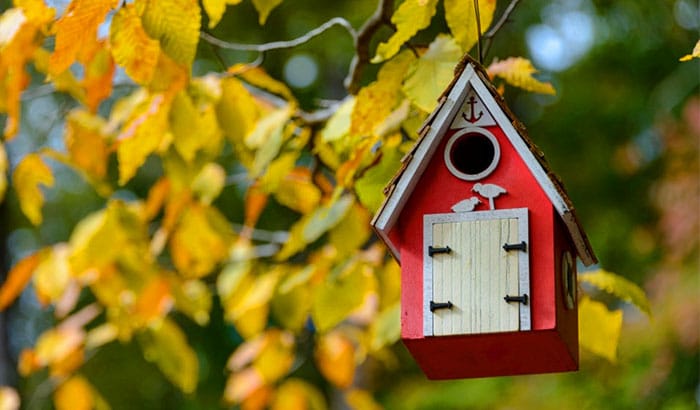Hummingbirds are just SO adorable! With their little bodies and speedily flapping wings, they are just fun to observe. To better promote the presence of hummingbirds in my yard, I decided to build a hummingbird house. As it turns out, hummingbirds have special nesting requirements. Here’s how to make a hummingbird house step by step.
Contents
The Basis of the Hummingbird House
Hummingbirds are not cavity nesters. They will not live in a traditional birdhouse. They like open nests, normally on a thin branch, preferably a fork. They also like their nests well camouflaged, usually well hidden from predators.
Using this information, I made a rendition of a suitable hummingbird house. As I go through the steps of making a hummingbird, keep in mind that hummingbirds are extremely small and wary of predators. The design of the hummingbird house is meant to incorporate seclusion and privacy.
The materials I used to create the hummingbird house are:
- Water balloon
- Old newspaper (or any paper perfect for papier-mache)
- Papier-mache paste
- Awl
- Glue
- Nesting materials (silk leaves, plant fibers, leaves, down, feathers, or fuzz from leaves)
The Base of the House
Step 1: Inflate the water balloon
The water balloon will serve as the mold for the papier-mache base. Make sure that the balloon is no more than 6 inches wide. Hummingbird nests are 1.5 inches on average. So it doesn’t make sense to make large houses that don’t appeal to them.
Step 2: Tear newspaper into 1-inch strips
Step 3: Dip newspaper strips into the papier-mache paste
Step 4: Apply the newspaper strips to the balloon
Make sure that the house is bowl-shaped, to mimic the natural nest of a hummingbird. Also, don’t apply too many papier-mache strips on the sides of the balloon. The natural hummingbird nest expands to accommodate the growth of the hatchlings. A papier-mache structure that’s too sturdy will not do well as a hummingbird house. The bottom part can have a sturdy frame.
Step 5: Remove the balloon from the nest form
Pop and peel the balloon from the nest form.
Making the House More Attractive to Hummingbirds
Step 1: Glue nesting materials to base
To give the nest form a more natural look, I glue a few nesting materials on the underside of the nest form. Hummingbirds use the following materials for their nests:
- Twigs
- Plant fibers
- Leaves
- Fuzz from leaves
- Spider silk
- Lichens and moss
- Feathers or other downy substance
However, since hummingbirds prefer building their own nests, I don’t make too much of a fuss over this part of the process. I just put enough nesting materials to give the house a more natural look. If a hummingbird chooses this house, it will build its own nest over it anyway.
Step 2: Add some nesting materials inside the nest form
Again, I don’t have to overdo it, the bird likes to do their own interior designing.
Step 3: Fit the hummingbird house between the forked branches of a tree
This may be tricky to do, but I use a little bit of glue to fix the birdhouse in the tree. I cover the glued part with a few leaves or silk to make it look natural. Hummingbirds build their nests in varying heights, ranging from 5-90 feet above the ground. I look up the common hummingbird species in my area and place my birdhouse at the appropriate height.
I also keep in mind to make sure that the house is sheltered from the sun, wind, rain, or predators. I make sure it is secluded.
Encouraging Hummingbirds into My Backyard
The main aspect of a hummingbird’s life that I take advantage of is their diet. Hummingbirds drink nectar from flowers and eat small insects. Making sure that I have many flowers in my garden helps me attract more of these small birds. And the more of these birds I attract, the higher the chances that the hummingbird house I built is occupied by them.
By making sure that my garden is rich in hummingbird chow, the more these birds will return again and again to my garden. According to biologist Stephanie Bittner, of the Arizona State University School of Life Sciences, hummingbirds remember where they can find food sources. They remember how to get to that food source through visual landmarks. Their good eyesight also helps them see tiny flowers and insects.
Flowering plants rich in nectar include trumpet honeysuckle, hummingbird sage, and bee balm. Hummingbirds are also known to prefer red or orange flowers more than hybrid or exotic flowers. Aside from flowers, I also use feeders to attract hummingbirds into my yard.
Look Forward to Seeing More Hummingbirds Soon!
Building a bird house is quite easy. It is how to make a hummingbird house appealing that’s challenging. But by just accommodating their natural needs, I can increase the chances of getting one to live in this homemade hummingbird house.



What’s with the dogs??? mVery distracting.